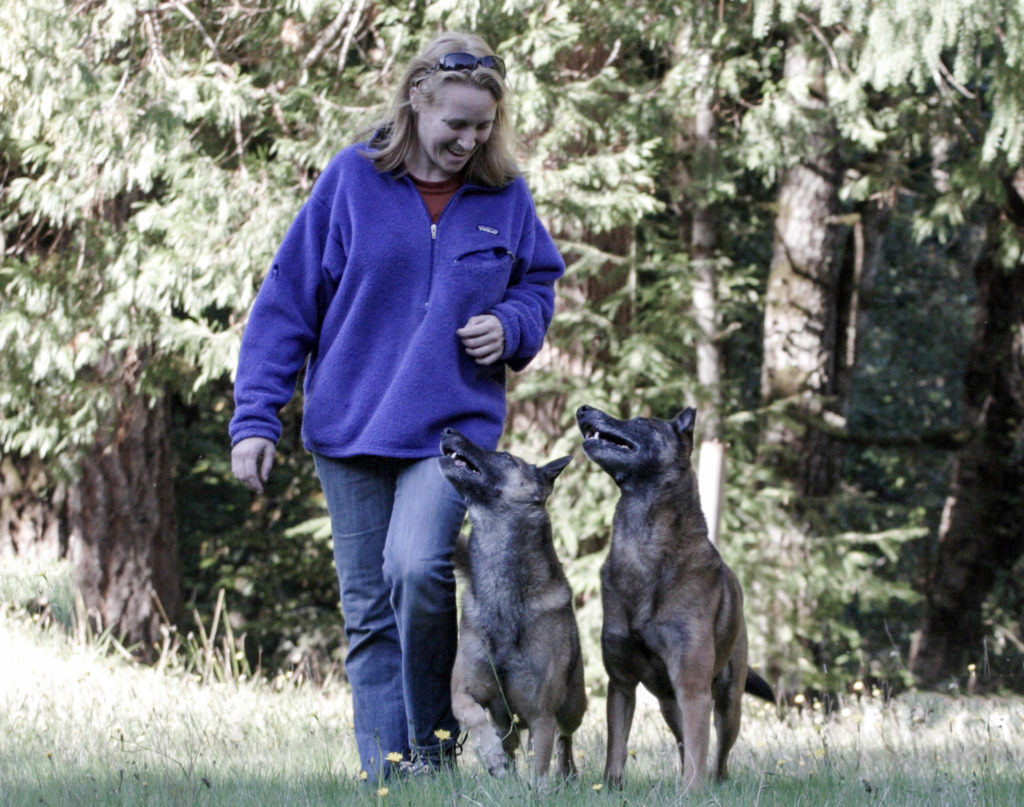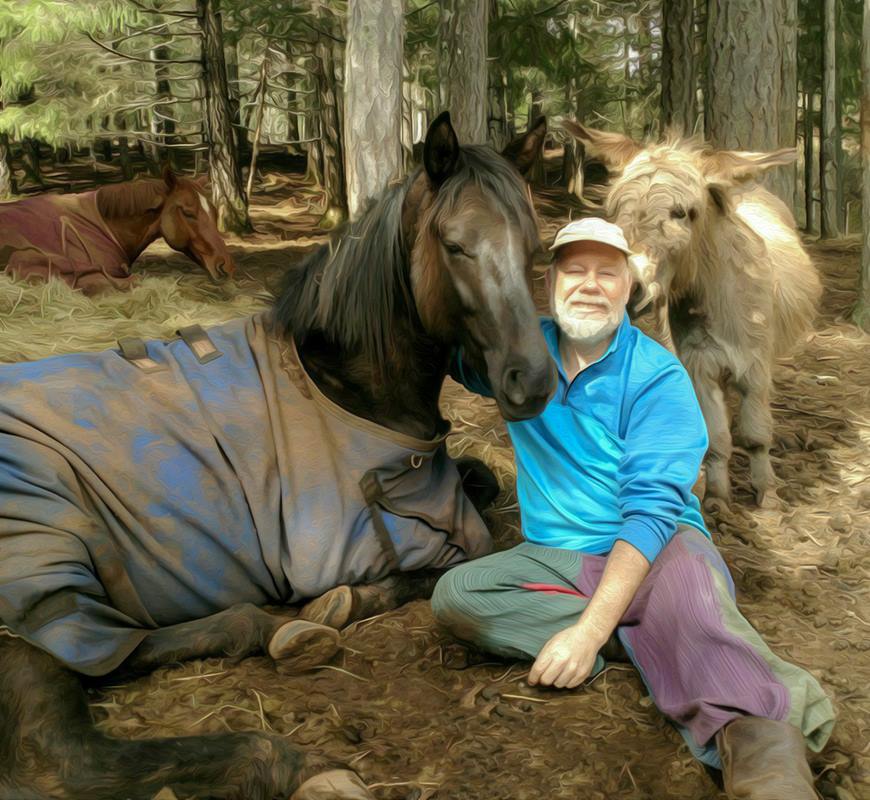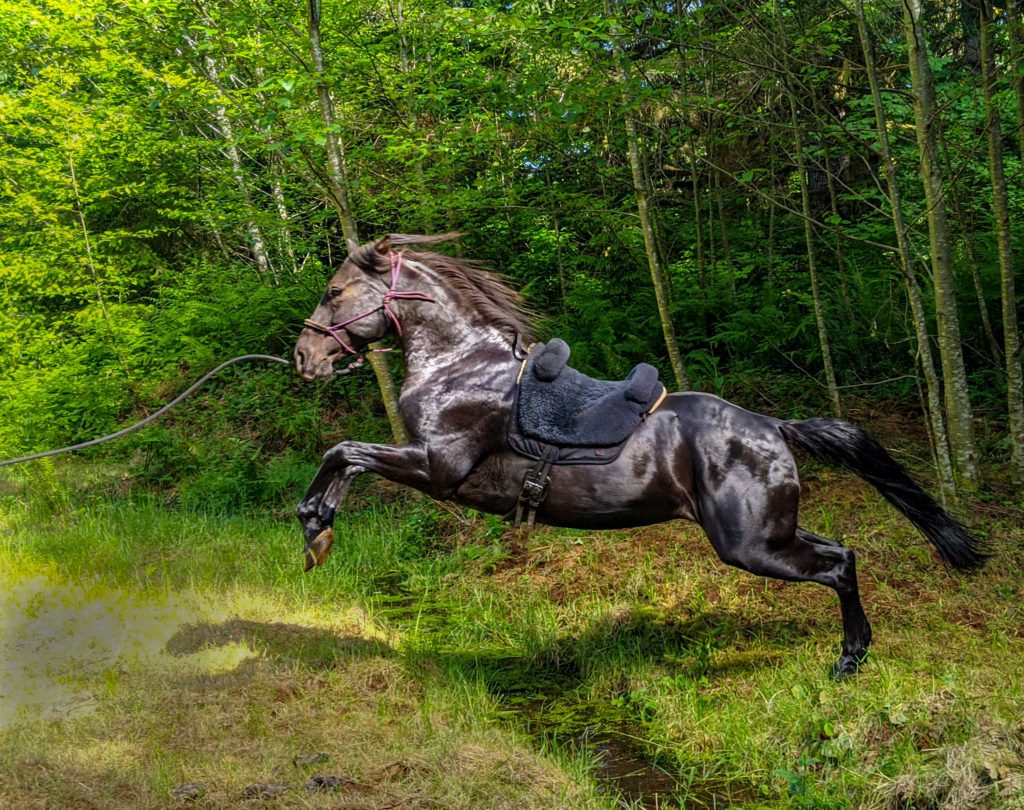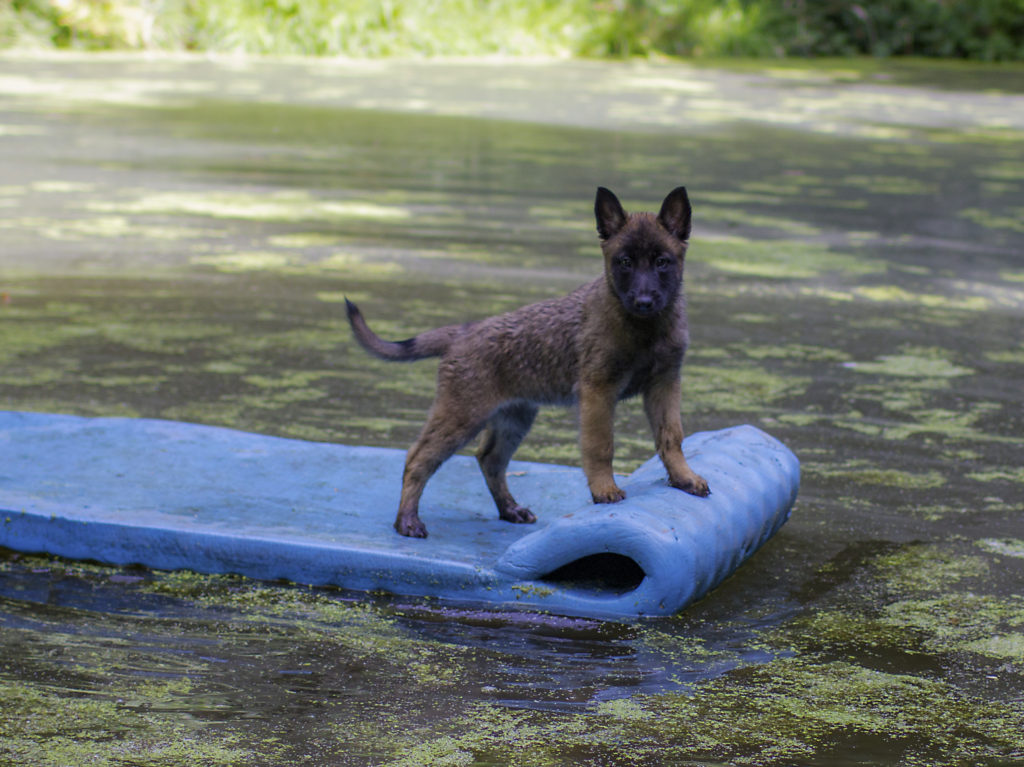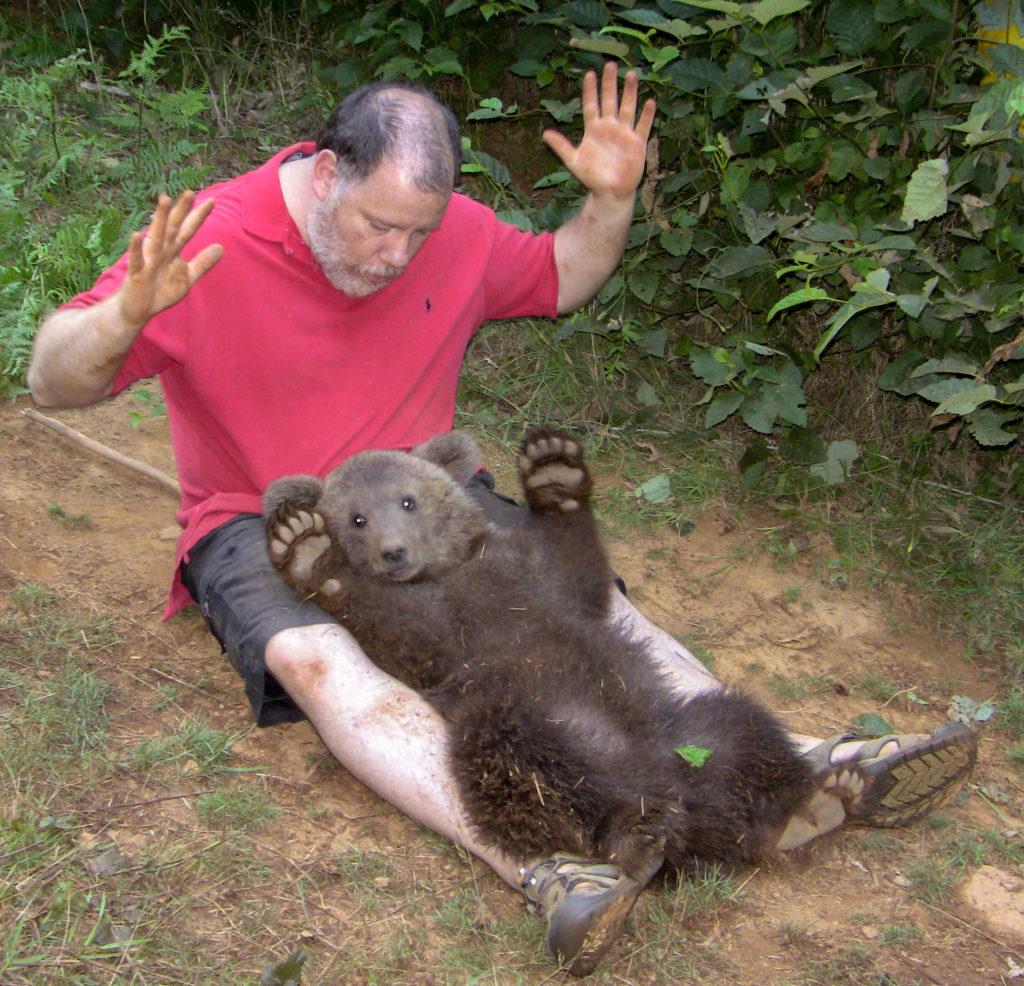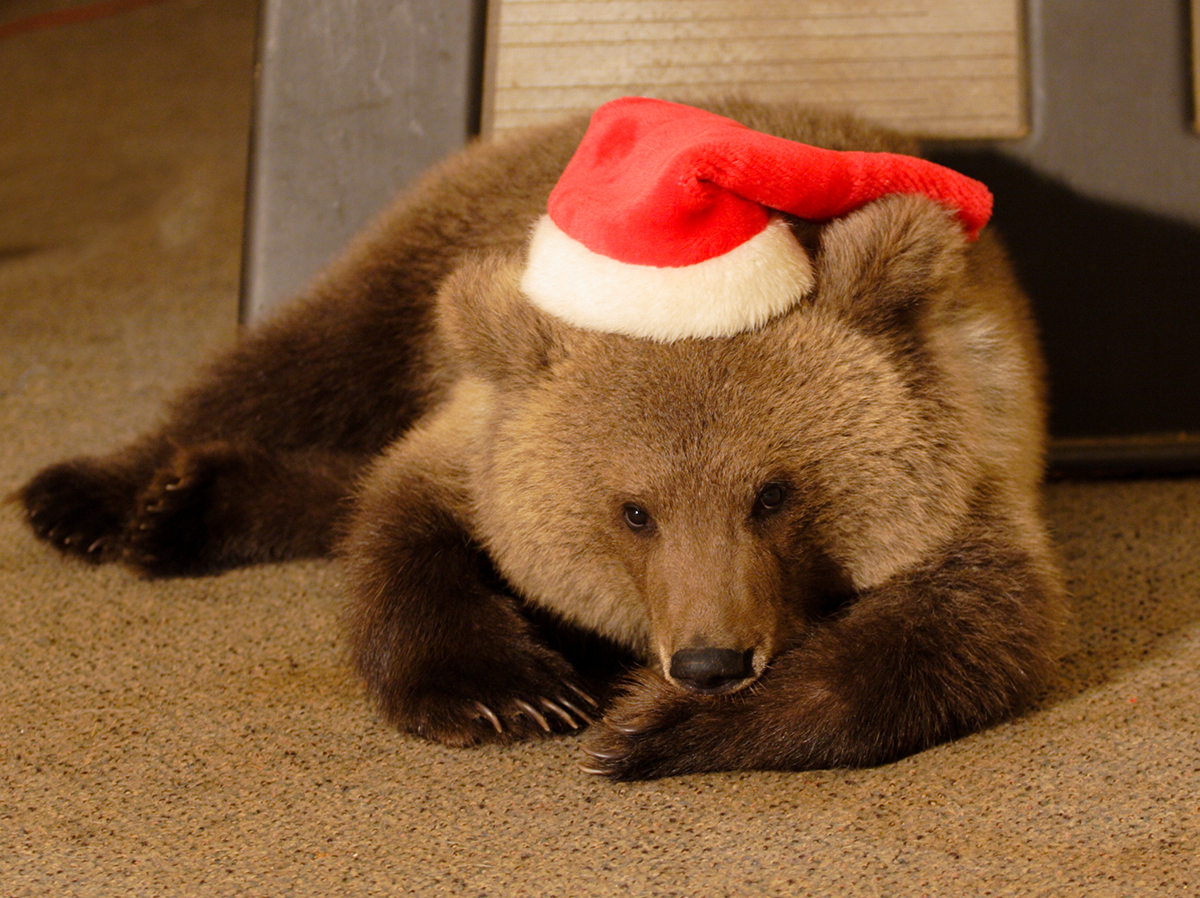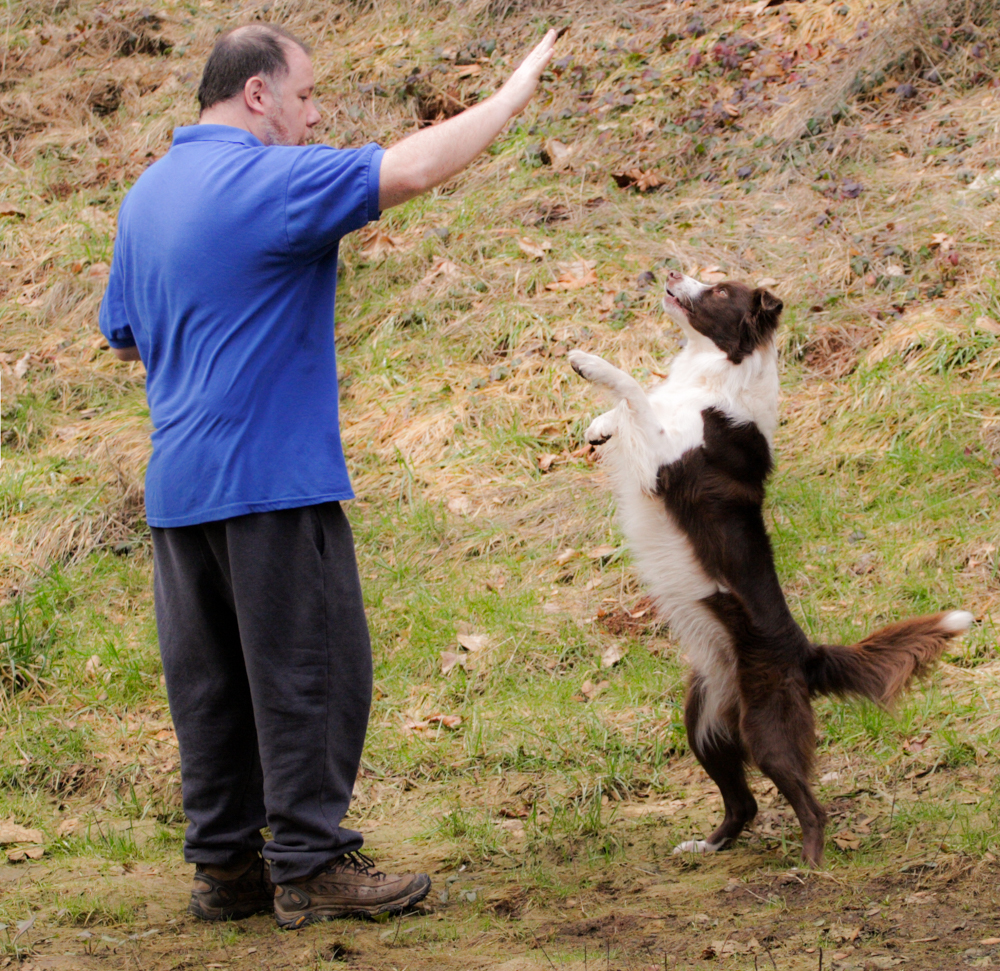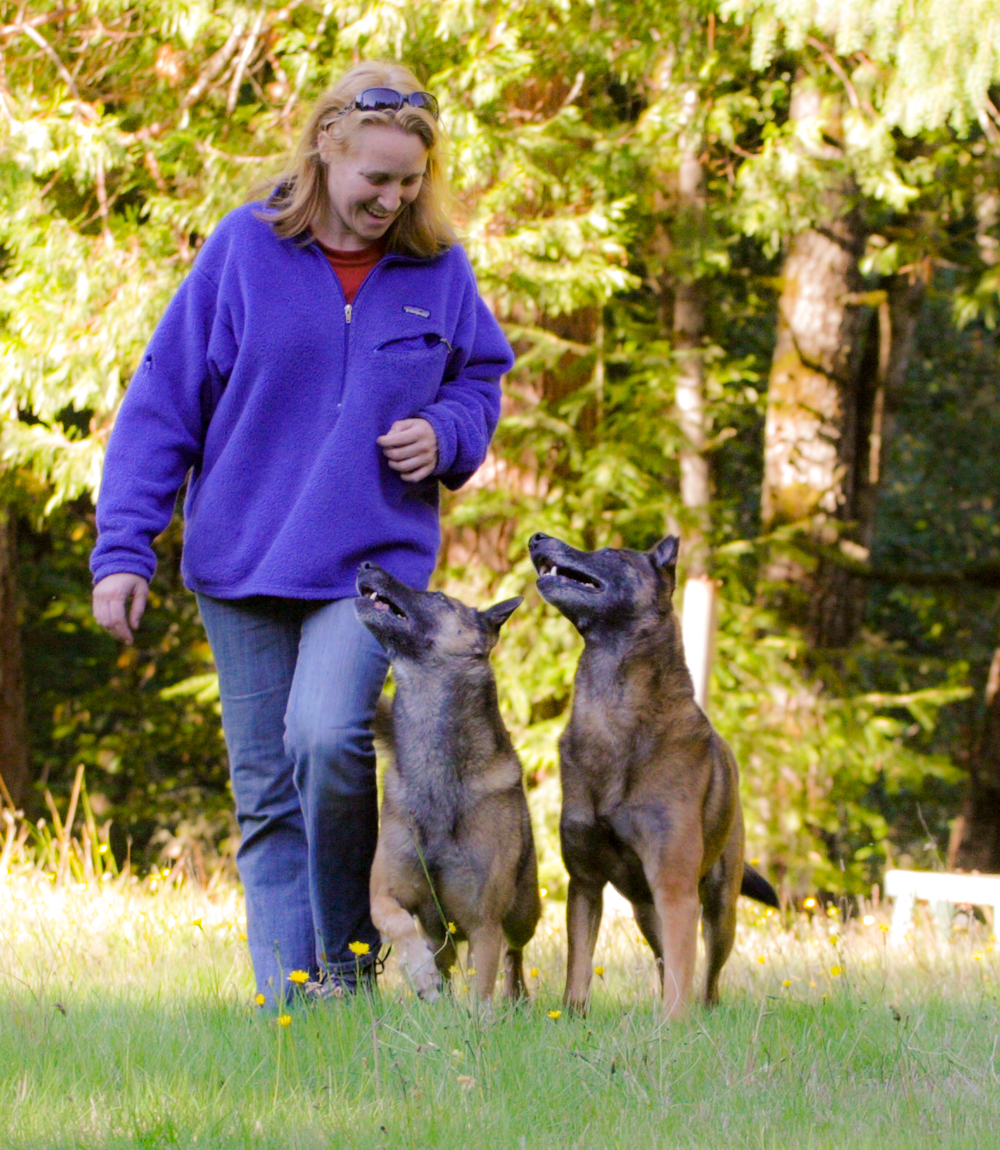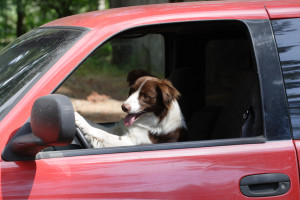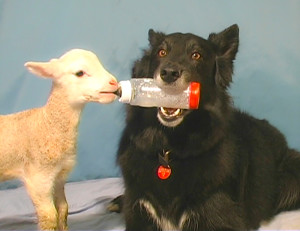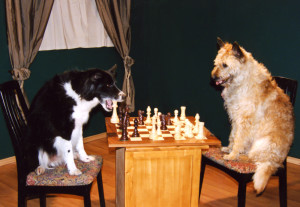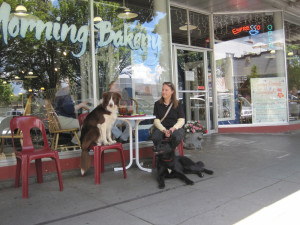Obviously I cannot cover all of animal training in a single article. In this post, I am going to discuss the basic idea of training. What it is and basically how it works. In later posts we will go into much greater depth on training specific behaviors. Training animals can be challenging, but is also immensely rewarding, and the dividends for both you and your animals will grow dramatically as you put more time into their training.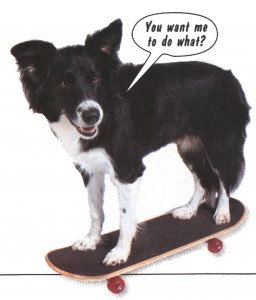
What is animal training?
In broad terms, everything you do with an animal is training. Animals are always learning; therefore, you are always teaching, even if you do not mean to be. In a more formal sense, animal training is a series of procedures you follow in order to alter an animal’s behavior. All animals possess certain natural behaviors which you shape into specific behaviors or chains of behaviors that you want the animal to perform on cue. You increase the frequency and intensity of desired behaviors and decrease the frequency and intensity of undesired behaviors.
What are the goals of training an animal?
- Teach specific boundaries
- Teach specific behaviors
- Refine social relationships
- Refine working attitude
- Habituate usage of the thinking portion of his brain
- Develop his character
Many trainers focus at the top of this list, believing that training is primarily about boundaries and behaviors. Over time, good trainers tend to shift their focus more and more towards the bottom of the list, realizing that teaching specific behaviors and boundaries is easy and that the real skill is to use your training time to develop your animal’s character and attitude and the relationship you want with him.
Refining social relationships means that you are constantly aware of the relationship you have with your animal and use your training time to polish this dynamic. You use training to make sure your animal respects and enjoys your leadership. That he trusts your decisions. That he wants to please you. Each time he performs as requested and the outcome is positive he becomes more confident in your leadership.
You must constantly be aware of your animal’s attitude, energy, and focus: you need to induce the state that you want, and only train while you are able to maintain your animal in that state. If you want a bright, enthusiastic animal, do not train when he is tired and flat. For me, training is always the best part of the day: we have a great time, and we are always engaged in a fun game. My animals love nothing more than figuring out what they have to do to get the reward.
Animals are reactive. Many of their responses naturally occur without thought. One of the central objectives in training an animal is to develop the habit of thinking before acting. “Thoughtfulness” works much like a muscle-the more it is used the stronger it becomes. So in training we rehearse mindfulness: we present a stimulus and facilitate our animal’s thoughtful response.
You must also remain aware of the character you want to develop in your animal. What you rehearse regularly in training you will see blossom in his daily demeanor. You may spend time developing patience, independent problems solving skills, confidence, and attention span. You may work to get him more focused on you, or less. Balance is essential here. Constantly evaluate your animal and your relationship and structure your training sessions to approach your objectives.
Origins of modern animal training
Humans have been training animals for over 3,000 years, but modern training techniques have developed primarily in the last century. Bypassing the complex history of behavioral psychology, two key concepts have largely defined modern animal training:
Classical conditioning, made famous by Ivan Pavlov (Russian physiologist and physician, 1849-1936): if you pair a neutral stimulus (say, the ringing of a bell) with a positive stimulus (say, a valued treat) you can condition the animal to respond to the neutral stimulus in the same manner as he responds to the positive stimulus. (Or the converse-pairing a negative with a neutral stimulus)
Operant conditioning, commonly associated with B.F. Skinner (American psychologist 1904-1990): an animal will repeat with increasing frequency and intensity those behaviors which result in positive consequences, and will repeat with decreasing frequency those behaviors which result in negative or neutral consequences. Almost all of animal training derives from that simple notion!
What skills are required to train animals well?
- Responsibility: animals behave naturally; all training is up to the trainer, not the animal.
- Body language: animals are very aware of your body. In many ways they will listen more to what your body says than to what your mouth says. So always be mindful of what your body is saying.
- Excellent observational skills: see everything the animal is doing and note all the factors contributing to what the animal is experiencing. See when to bolster, when to stop, when to encourage, etc.
- Imagination: always see how things look to the animal.
- Understanding of the science underlying behavior and behavior modification.
- Mastery of the mechanical skills required.
- Great timing and reflexes: praise at the right moment and you increase the behavior you like, praise a second early or late and you get something else entirely.
- Ability to trust and to engender trust in animals
- Creativity and flexibility: something is not working; what else can you do to get the behavior?
- Calmness and emotional self control: reactions in training must always be dictated by the desired effect and outcome, never by anger or frustration.
- Acting ability: you need to be able to act unhappy or disappointed or ecstatic as needed.
- Consistency: the more you can repeat your patterns identically, the more easily your animal will be able to learn.
- Patience: sometimes it seems like simple things take forever to train. Breathe, relax. It may take a little while, but he will get it…
- Energy: you will generally get from an animal what you put in, and if you need a high energy behavior, you need to be energetic. And you need to be able to play games and keep your animal’s attention at all times.
- Training Intuition: the art comes in knowing which technique to use when, and in subtly blurring the techniques together to respond to your animal’s mood and state.
How to train a new behavior
There are many different techniques to train an animal, and there are countless variations on these techniques depending on the individual animal and the precise behavior being trained. However, the underlying process is surprisingly constant. Without being present I do not know your animal, so you need to determine which techniques are effective and safe in training him. If you understand these basic components of training, you can modify them to teach almost anything:
Evaluate your animal’s drives and reinforcers: before you can do anything else, you need to get to know your animal. What motivates him? What does he find rewarding? When does he have energy? Does he have a strong opposition reflex? Is he easily bored or overstimulated? Everything you do in training is predicated on your knowing his prefences and attitudes so you can manipulate them.
Condition a secondary reinforcer: all this means is that before you start training, you must teach your animal a special signal that means, “Yes, that was what I wanted and I am going to give you a reward!” This secondary reinforcer can be a word like “yes”, a sound, a click, whatever you would like. And all you do to condition this reinforcer is make the sound and give a reward, over and over. Use a valued reward like a yummy treat, and do this many times each day until your animal understands that the sound means a treat is coming!
Determine the behavior precisely: You cannot effectively communicate your desire to your animal until you know exactly what you desire. If you want the animal to come when called, does that mean come close or come and sit in front? Does it mean he must run or just come at any pace? If more than one person gives the animal commands, make sure you all agree what the commands are going to be and what they are going to mean. Do not use these commands except when training until they are well understood. Even when they are understood, these should be sacred words that you expect your animal to always react to. Do not use these words to mean other things. If you are teaching that “Come” means run to you and sit in front, then do not say “Come” when you really mean ignore the squirrel and keep walking down the trail with me.
Induce the behavior: In this phase you use your creativity to get the animal to perform the desired activity. You are not asking or telling the animal what to do. You are luring him into it. For instance, if you want a sit, you can hold food so that the animal lifts his head and naturally sits. There are many different ways to induce the animal. You can lure with food or a toy. You can use props, a piece of tape behind an ear, for example, to teach the animal to scratch. You can use the environment: walking along next to a wall so the animal has to stay close to you when heeling. You can even wait until the behavior occurs naturally. During this phase do not say “No” or correct any behaviors your animal offers. He does not know what you want and is trying his best to please. This phase is best done away from all distractions so your animal is focused on you. Be calm and patient and try to enjoy the challenge of communicating with your animal. Set him up to succeed. Over time, as your animal begins to understand the behavior, gradually reduce the lure until he is doing the behavior without any help.
Bridge: In traditional usage, a bridge is a tool used to tell the animal that you like what he is doing and that a reward is coming. I suggest a slightly different technique: using four distinct bridges. While this may sound complex – and will likely take a few days for you to master – it can significantly improve training results. You can use whatever sound or sight you prefer for each of the bridges. Here are the ones I use:
- Terminal positive bridge: “Yes!” This is the secondary reinforcer that you conditioned at the beginning. It tells the animal that he did it right and that the behavior is over. It is almost always followed by a primary reinforcer. (Timing is critical when giving this signal because the animal will tend to repeat whatever he was doing at the precise moment this occurred.)
- Intermediate positive bridge: “Good!” This tells the animal that you like what he is doing and he should keep doing it or even increase the intensity of what he is doing. It can be repeated indefinitely until it is followed by a terminal positive bridge, and is like saying “warmer” when playing “hot-cold” games.
- Intermediate negative bridge: “Aaatt.” Not strictly a bridge, this is a way of telling the animal that what he is doing at the moment is not going to get him to the reward. It is like saying “colder” when playing “hot-cold” games.
- Terminal negative bridge: “Nope.” Not strictly a bridge, this is a way of telling your animal that what he did was not what you wanted and the behavior is over and you are going to reset and start over.
Reward the behavior: Once you have given a terminal positive bridge, reward the animal. Be creative. And be enthusiastic in the right proportion and at the right energy level to keep him excited and focused but not frantic. At this point you are telling the animal that you like it when he performs the behavior, so be expressive. Give food, praise, etc. Throw a ball, play tug, whatever will be authentically rewarding to your animal.
Associate the behavior with a cue: Once the animal has started performing the behavior without too much luring, start associating a cue. You are still helping the animal at this point, but as the animal performs the behavior, you say the word and/or give the signal. Any time you give a cue and then allow your animal to ignore it, you are training your animal to ignore you. So only give the cue once and then induce the animal to perform. If your animal does not perform the behavior, do not simply repeat the cue: go back a step and get the animal to perform.
Proof the behavior: During this phase you ask the animal to perform the behavior in increasingly difficult situations. You probably started at home. Now you may try it amidst gentle distractions. Then at the park but away from other animals. Then near other animals. It should still be fun and upbeat. Do not introduce excessive distractions too soon. If your animal is too distracted, go back to a less distracting environment and reinforce the behavior. Increase the duration, intensity, and distraction and then increase the distance at which he can perform.
Reinforcement schedules: There has been much debate about the ideal schedule of reinforcement. Should you reinforce every time? Every few times? Randomly? Only the best performance, etc. Science generally suggests that a variable schedule will work best, but many trainers feel a 1:1 schedule works best. There are volumes written on the topic, but here is the short answer: do what feels and works best with your animal. Start with a 1:1, and vary it slightly from there. Sometimes skip a few; other times give a huge jackpot for a particularly good performance. Observe which schedule seems to most increase your animal’s motivation and do what works!
However, one place that people err is in not varying the bridge as well. What I mean is this: if you execute a terminal positive bridge you should also provide a primary reinforcer. If you are not going to reinforce, also do not bridge.
Correct non-performance of the behavior: Correcting your animal for not doing what you asked is a last resort. It means that you have failed somewhere in the preceding phases. So go back and fix your mistake and do not hurry!
Talking about corrections is always difficult because many people have such a strong position on the issue that they do not want to hear anything else. However, regardless of how you feel about corrections in general, with animals corrections are generally counterproductive. First of all, animals will often learn mistrust after a single event. Second, the corrected animal tends to very quickly lose interest in training and become unwilling to try new behaviors.
The solution to this is often to use “negative punishment” to reduce the frequency of non-compliance: if an animal understands a behavior and refuses to do what is asked, they lose the opportunity to get the treat or to play the game. Generally this means they are put away in a crate and watch another animal work and get treats and praise. This has several positive ramifications: the animal’s desire to play the training game is built up and up; they come to envy the other animal and really want to do better next time, they observe the other animal performing the behavior, etc.
Every bit as counterproductive as overcorrection is under-correction or nagging. If you are not happy with a behavior, you need to communicate effectively to your animal. If you allow him to continue doing the behavior you create confusion, and if you repeatedly object but do nothing about it, he will learn to ignore you, will respect you less, and will be annoyed by your nagging. So make sure that when you do correct something you are effective.
Put your animal away: many people finish up a training session and then give their animal dinner, or go for a walk, or sit with them and rub their bellies. I suggest the opposite. When you are finished with a training session, put your animal in a crate to think about what you just worked on for a little while. You do not want them to anticipate the end of training because they get a big reward; you want the training session to be the reward-the best game possible-and you do not want them then to become immediately distracted.
A few secondary techniques that may help:
- Successive approximations and increasing criteria: If the behavior is difficult, you may want to reward approximations. Reward the animal for doing something close to the desired behavior and then increase your expectations gradually. Over time, raise your criteria for successful performance.
- Backwards chaining: If the behavior is complex, you need to break it down into parts and train them individually, starting with the last component first. For instance, if you want the animal to stop what it is doing, turn towards you, run to you, sit in front, and look into your eyes, you would start by teaching the animal to look into your eyes. Then you would teach it to sit in front and look into your eyes. Then to take a few steps and sit in front and look into your eyes, etc.
- Pressure: animals are extremely sensitive to pressure and the release of pressure. Stepping into their space, moving suddenly, staring, forceful energy, and many other actions will create a sense of pressure on your animal. A powerful tool in your training arsenal is using pressure to alter their behavior and using the release of pressure to reward their correct behavior.
- Premack Principle: more probable behaviors will reinforce less probable behaviors. Sounds complicated, but you know it well in different language: “If you want dessert, you have to eat your broccoli.” Have your animal on leash, and throw a great treat out of reach. Make him come to you, sit, or perform another behavior that he already knows before you release him to run and get the treat. This not only reinforces the desired behavior, it develops self-control and focus in the face of distraction.
- Select training times: if your animal works mostly for food, do not work him after a big meal. Try to train when you will be most successful, particularly at first. As he progresses, he should be able to work reasonably well regardless.
- Exercise and environmental enrichment: make sure that your animal is getting adequate exercise and is not bored.
- Stop on a good note: try to end your training sessions with success. Work on something he does well and praise a lot.
Behaviors to work on with your animal
Anything you can think of! Sit, down, stay, roll over, shake, beg-up, wave, heel, etc. They are all good exercises that provide opportunities for you to work with your animal and develop him further. But there are a few behaviors that are particularly valuable and that I encourage every owner to practice regularly with their animal if they can be performed safely:
- Bite inhibition: Never apply excessive pressure with your teeth to my body.
- Attention: Look into my eyes and wait for a command. Almost all learning starts with attention, so this cannot be overemphasized. Play attention games every day…
- Hugging: lie calmly and happily while I lie next to you and gently hold you in place.
- Give: Open your mouth and drop whatever is in it.
- Crating: relax in a crate for a few hours at a time.
- Tie-down: relax when tied to something in the house.
Expectations
What you can accomplish is limited somewhat by the animal you are training and your skills as a trainer, but the single biggest factor that will determine how far you take your animal is how much time you spend working and playing with him, so get out there and teach him something every day!
